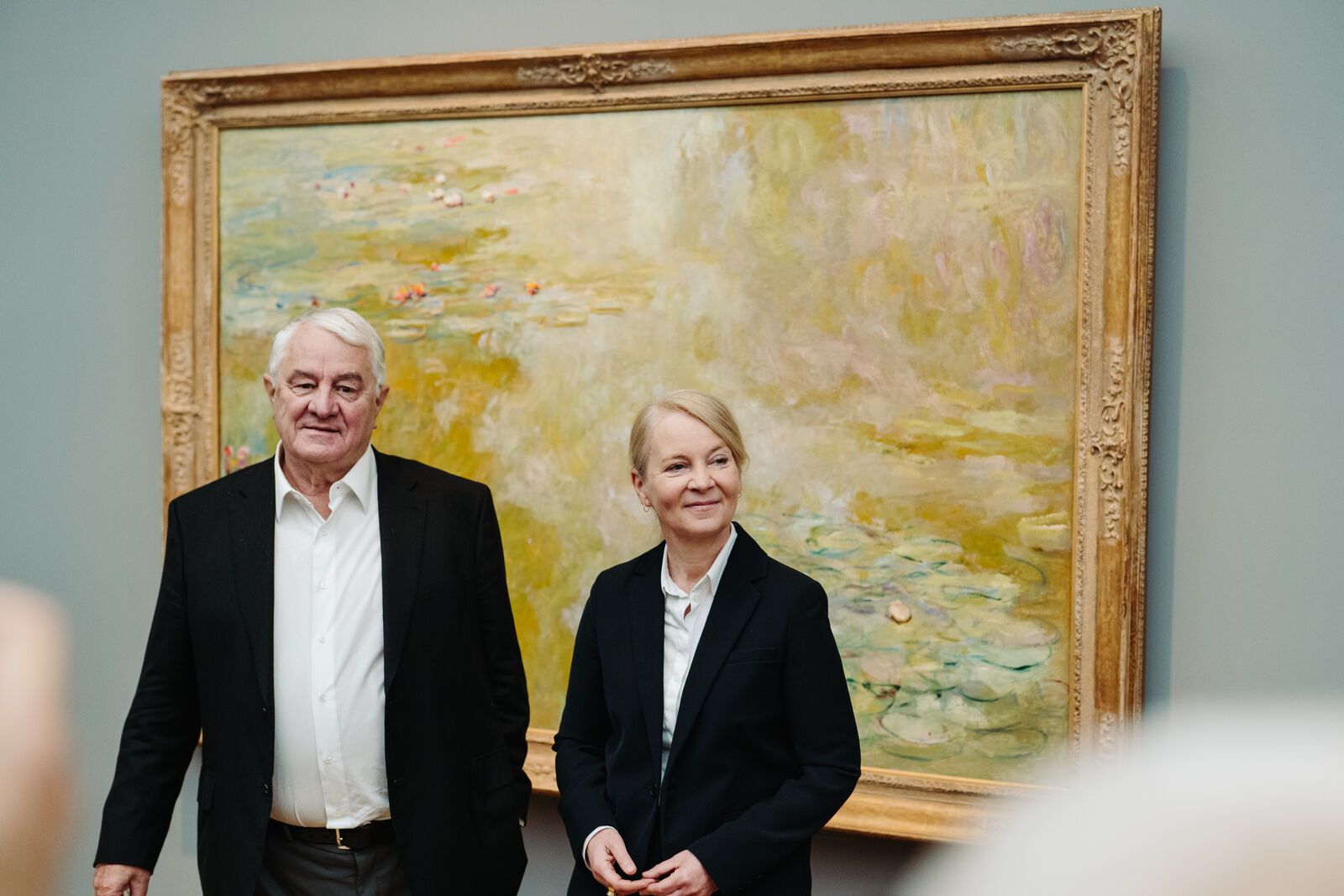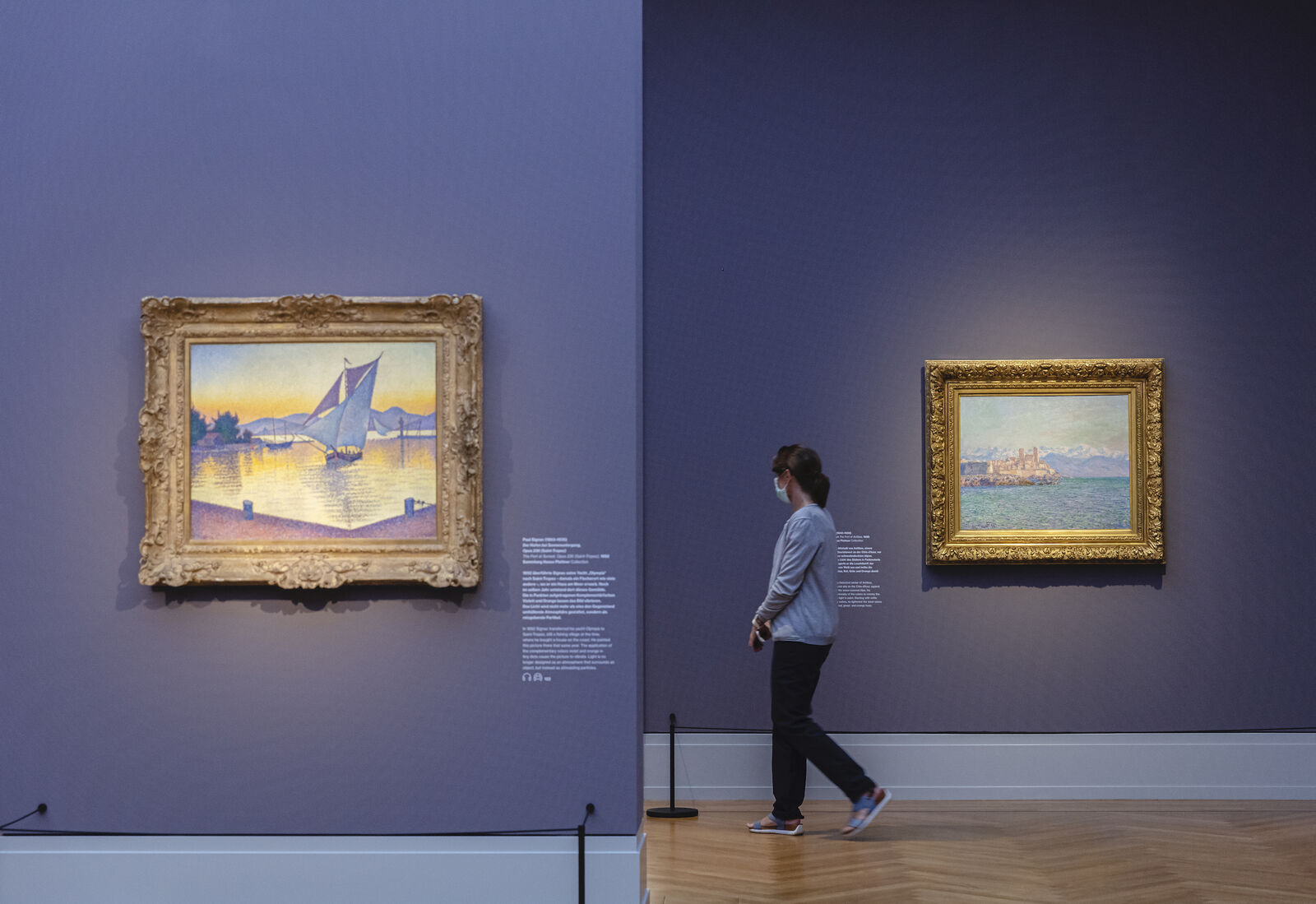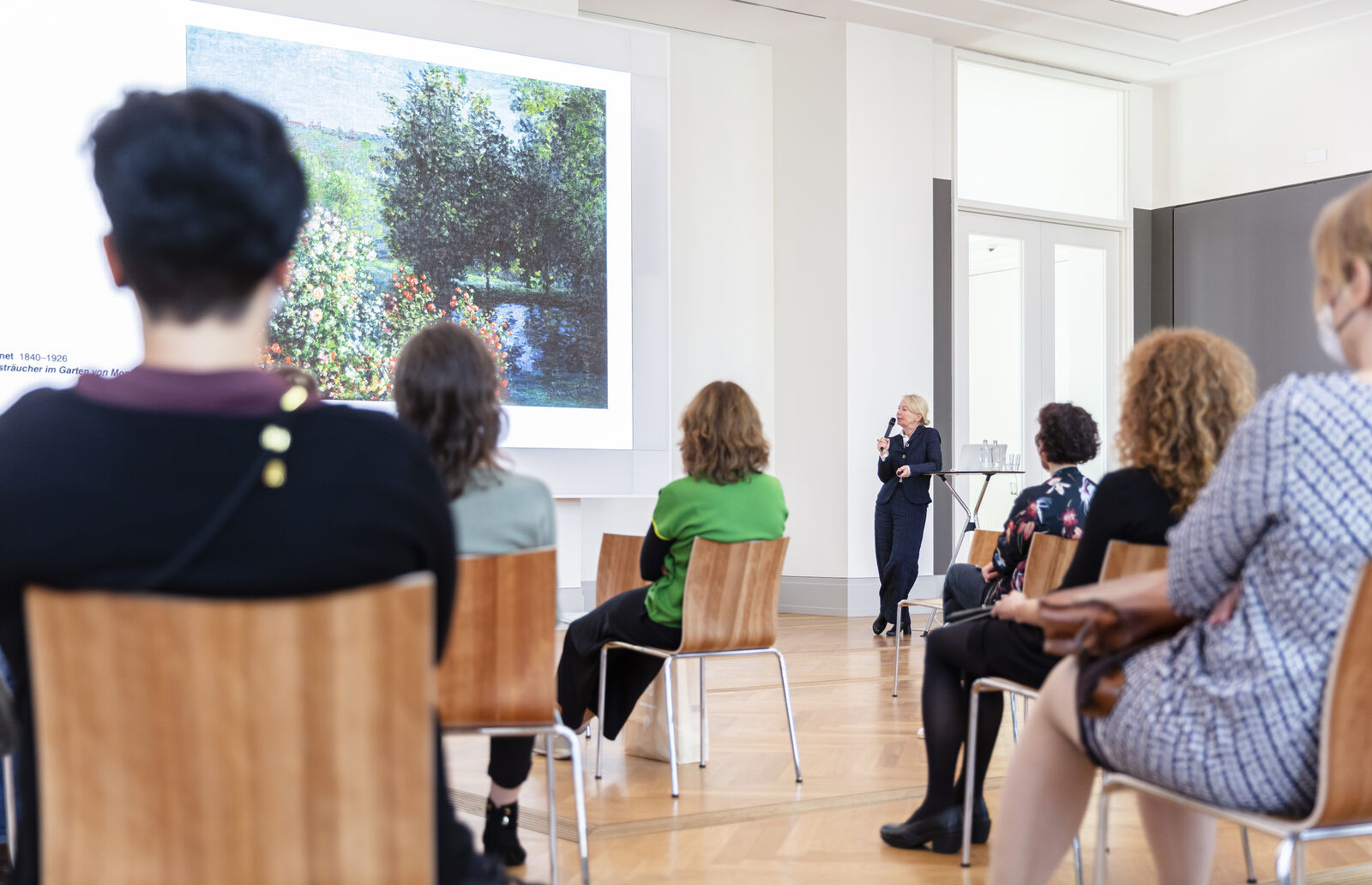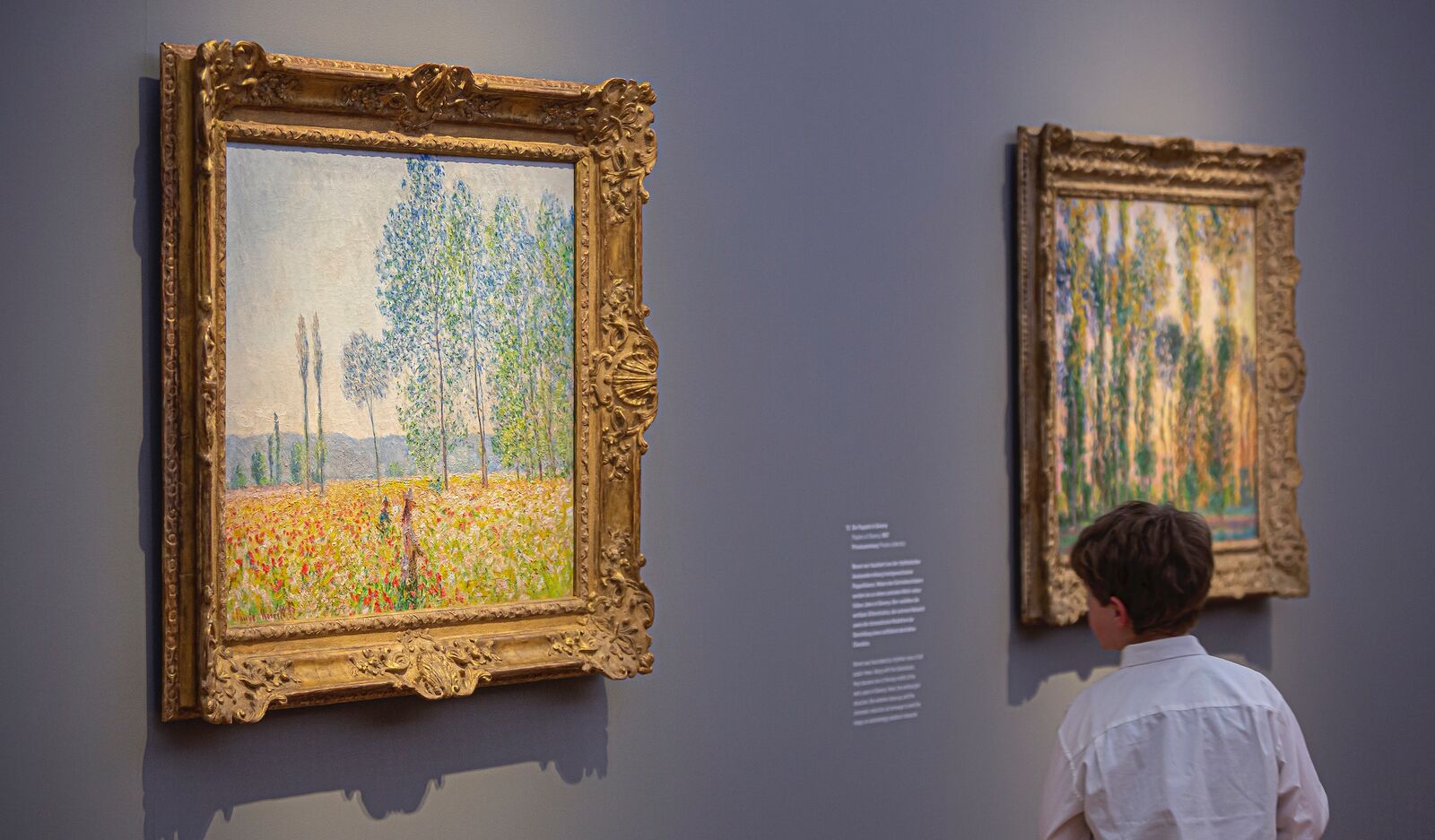“Encounter the original, share the passion” are the guiding principles of founder and benefactor Hasso Plattner. His great commitment to art is reflected by the permanent display of parts of his extensive collection of Impressionist and Post-impressionist paintings at the Museum Barberini.

Henry Balaszeskul
Hasso Plattner: Founder and Benefactor
The cofounder and longtime chairman of the software company SAP, Prof. Dr. h.c. mult. Hasso Plattner is one of Germany’s most prominent entrepreneurs, whose name precedes him throughout the world. Plattner has been a patron of science and innovative technologies for many years through his establishment of the Hasso Plattner Institute of Software Systems Engineering (HPI) at the University of Potsdam and the Hasso Plattner Institute of Design at Stanford University in the United States.
Coasts, Grainstacks, and Modern Life
With an impeccable eye for quality, Hasso Plattner has amassed one of the most significant collections of Impressionist and Post-Impressionist works over the past two decades. His collection of 115 paintings by Claude Monet, Pierre-Auguste Renoir, Alfred Sisley, Berthe Morisot, Camille Pissarro, Gustave Caillebotte, and Paul Signac, as well as many other artists of the late nineteenth and early twentieth centuries, contains masterpieces such as Caillebotte’s The Argenteuil Bridge and the Seine (ca. 1883), Monet’s Grainstacks (1890) and Water-Lilies (1914–17) as well as Signac’s The Port at Sunset, Saint-Tropez (1892).

David von Becker
Plattner began collecting his first paintings from this art period in 2000. As a water-sport enthusiast, his choice of subjects initially reflected his passion for the sea, although his focus increasingly shifted to other subject matter of the Impressionists, including urban life in Paris and rural scenes from the periphery of of the capital. Plattner was especially fascinated by the landscapes of the Impressionists, whose compositions, colors, and painting technique served to make the temperature, the weather, and the play of light in nature tangible with all the senses. Plattner explains: “The Impressionists describe the atmosphere in such a direct way that when I look at Caillebotte’s painting of the Seine, I feel involuntarily compelled to jump into the water, in the same way that Monet’s evening scene with the sailboats near Argenteuil invites me to immediately set sail and his painting of a field of grain fills me with the desire to walk through the undulating rows of grain.”

David von Becker

David von Becker
Center of Impressionist Art
Since autumn 2020, the largest part of Plattner’s collection has been on permanent display at the Museum Barberini. Over 110 paintings give visitors an overview of the history of French Impressionism, from its beginnings with Monet, Renoir, and Sisley to the exhibition collaborative of Pissarro, Morisot, and Caillebotte and its further development by the Pointillists and the Fauves. Exhibiting 40 paintings by Monet, no venue in Europe outside of France shows more works by this artist in one place. Potsdam is thus one of the most important centers in the world for Impressionist landscape painting.
Hasso Plattner’s motto of “experiencing originals and sharing enthusiasm” is also reflected in the up to three temporary exhibitions a year which the Barberini organizes in cooperation with museums all over the world, in the extensive program of events and education, and the daily exchange with visitors and art fans, locals and guests from far away, as well as families and children.
Passionate about Potsdam
Hasso Plattner’s commitment to his adopted hometown, Potsdam—including the Museum Barberini, the HPI at the University of Potsdam, and his funding of the reconstruction of Potsdam Palace—was acknowledged in 2017 when he was granted an honorary citizenship of Potsdam.
The Hasso Plattner Foundation
In 2015 Hasso Plattner began to focus his longstanding philanthropic activities on his foundation. The Hasso Plattner Foundation is dedicated to accelerating the adoption of digital technologies in science and education, improving the accessibility of art and culture, and supporting environmental conservation. As sponsor and shareholder of both cultural venues Museum Barberini and DAS MINSK Kunsthaus in Potsdam, the Hasso Plattner Foundation finances museum operations, the exhibition program, and the expansion of the collection.
DAS MINSK Kunsthaus in Potsdam
The former terrace restaurant "Minsk", built in the 1970s in the modernist style of the GDR, has become a place of encounter between modern and contemporary art—and between people. Artworks from the former GDR, which are part of the Hasso Plattner Collection, are shown here in new contexts. Developed over the course of years, the extensive collection of significant works by renowned artists from the former GDR, such as Wolfgang Mattheuer, Bernhard Heisig, and Ruth Wolf-Rehfeldt, forms the starting point for the museum's program. Works from this time will be brought into dialogue with contemporary art at DAS MINSK.
Two museums, one ticket
The combined ticket is valid for the Museum Barberini and DAS MINSK Kunsthaus in Potsdam. The joint house ticket allows entry once each. A visit to both houses is possible on two consecutive opening days. The combined ticket can be purchased without a time slot ticket at the museum and the webshop.
The annual membership pass Plus enables you to visit both museums—the Museum Barberini and DAS MINSK Kunsthaus in Potsdam—for an entire year, also without a timed ticket. For more info, please click here.